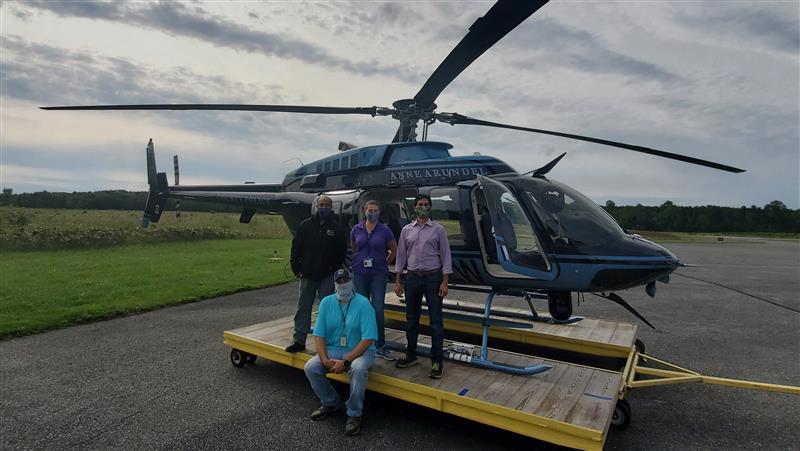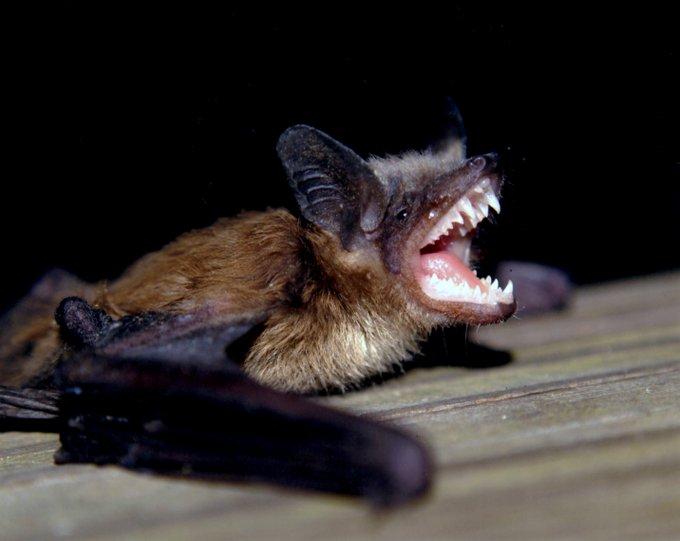How is the rabies virus spread?
The rabies virus can be spread when the saliva of an infected animal comes in contact with an open wound or mucus membrane of any warm-blooded mammal including wildlife, pets or humans. This usually occurs from a bite or a scratch. Once infected, the virus incubates in its host for weeks to months.
During the incubation period, the virus is traveling from the site of exposure to the brain using the central nervous system as a pathway. At this time, the host will show no symptoms and cannot spread the virus. Once it reaches the host’s brain, the virus begins to shed. It is during the shedding period that the virus can be transmitted to another host. Once viral shedding begins the host will die within seven days of symptom onset.
What are the symptoms of rabies?
The initial symptoms of rabies in humans are similar to other diseases, including fever, headache, general weakness and discomfort.
As the virus progresses, other symptoms may include:
- pain and tingling at the site of exposure
- anxiety
- insomnia
- confusion
- slight or partial paralysis
- hallucinations
- agitation
- foaming at the mouth
- difficulty swallowing
- fear of water
Symptoms of rabies in animals*:
- progressive paralysis (throat and face muscles)
- inability to swallow (causing excess salivation)
- lower jaw drop due to facial paralysis
- sluggish or docile
- restlessness
- hyper-aggressive behavior
- rapid breathing
- lack of coordination
- convulsions
*Animals may also exhibit other behavioral changes such as wildlife having no fear of humans, ignoring the presence of humans, being uncharacteristically affectionate toward humans or nocturnal animals being active during daylight hours.
What are common rabid animals in Maryland?
Rabies in Maryland are primarily found in raccoons and bats. Other wildlife species that will carry rabies are red and gray foxes, skunks, feral cats, coyotes, bobcats, groundhogs, deer, otters and beavers. It is possible, but unlikely, for opossums to carry rabies. Other smaller mammals such as squirrels can also develop rabies but a bite wound to these smaller animals usually ends in death before the virus has time to take effect.
How can I minimize the risk of exposure to rabies for my pet and me?
First, always enjoy viewing wildlife from a distance. Do not handle or feed wild or stray animals. Store trashcans and other food sources in proper containers that prevent access to wildlife. Also, maintain the property in such a condition that wildlife cannot gain access to interior spaces.
To minimize exposure to pets, supervise pets when outdoors. Pets should not be fed outside. Feeding outside will draw wildlife in and keep them in close proximity to pets. Make sure pets are vaccinated against rabies. Maryland law (Article 12, Title 4, Subtitle 6-601) requires that all dogs, cats and ferrets four months and older be vaccinated against rabies.
Anne Arundel County Animal Care and Control offers low-cost vaccination clinics on Thursdays throughout the year.
What should I do if I am attacked by or exposed to a wild animal?
If you or your pet is exposed to a wild animal, wash the wound immediately with soap and water. Once the wound has been cleaned, contact Animal Care and Control. This would include wildlife inside the living quarters of a private home or wildlife in an indoor public space.
During regular business hours, Animal Care and Control can be reached at 410-222-8900. After business hours, call dial 911 and ask for the on-call animal control officer. Then seek medical attention and notify your health care provider.
Who should I call if I see sick or injured wildlife?
Do not approach or try to interact with the sick animal. If you see sick or injured wildlife and there is no known human or pet exposure, contact the Maryland Department of Natural Resources at 877-463-6497 or 410-349-8130. After business hours, call 888-628-9944 or 410-260-8888.
Who should I call if I have questions about post-exposure prophylaxis (rabies shots) or quarantine for my pet?
For PEP or quarantine for pets, call 410-222-7254.
For the Oral Rabies Vaccination (ORV) Program or to raise a concern, call 410-222-7192.
Additional Resources





